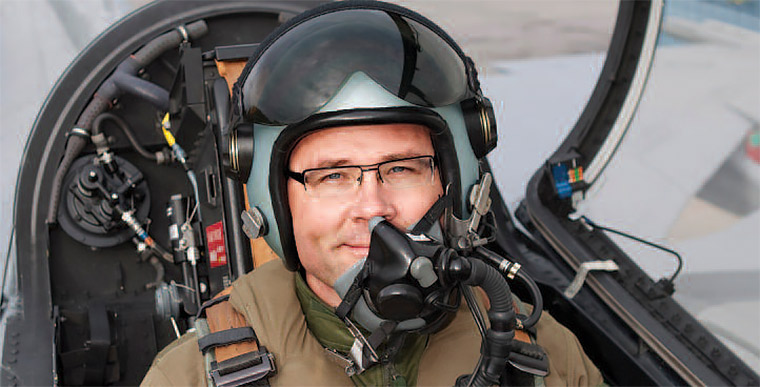Mr Buskhe, you joined Saab in 2010 as a defence ‘newcomer’ because you worked before in the energy sector. Six years later, what is your overall assessment of the European defence industry, of its strengths and weaknesses?
My impression from the start was the strength of the European defence industry to effectively innovate and adapt. Coming from a sector that itself is significantly defined by technological innovations, I quickly learnt that the defence sector was even more dependent on moving technological innovations forward in order to fulfil the ever changing demands of the market. As for the weaknesses of the European defence sector, I would perhaps point to the fact that we have duplication in many capability areas.
Every new CEO brings some kind of change with him. What is the biggest change you brought about in SAAB and what strategy is the company following under your leadership?
During the last five to six years, Saab has grown to become a bigger company in many aspects. Not only has our order backlog and turnover multiplied but our products and offers are much more competitive on the global market. Saab has developed into a true international company with customers in more than 100 countries. We also put a lot of emphasis on innovative Research and Development (R&D). Twenty five percent of the company’s turnover is invested in R&D, which contributes highly to our competitiveness.
How do you see the European defence industry evolving in the next 5 to 10 years? How can it remain strong and competitive while global competition gets tougher and tougher?
The conditions for driving the European defence industry forward in the next five to ten years are starting to move into place. However, drawing on our shared competences and experiences, whilst making use of our innovative and adaptive thinking and skills, will only get us part of the way. If Europe is to remain truly competitive on the global stage it needs to credibly and sustainably find ways to work more efficient together, but also together with strategic partners from around the globe.
Current EU defence integration initiatives, starting with the EU Global Strategy, aim at enabling Europe to achieve an “appropriate level of strategic autonomy”, including on capabilities. Is industry capable and ready to deliver?
When we are asked to meet the demands of governments we will always deliver innovative and cutting edge products, based on our R&D activities. We live in a complex world with many difficult challenges. I believe that the real challenge will be to accurately and in a timely manner identify the threats of tomorrow, and how we should tackle these. It is crucial to work together at a European level but also together, once again, with our strategic partners in other parts of the world.

Innovation is crucial in this respect. How is Saab making sure it remains at the cutting edge? What role does R&T play? To what extent do you reach out to non-traditional defence industries?
R&T is vital for our survival as a company. We invest a lot by ourselves and also in collaboration with academia. There are many examples, but one really worth mentioning is the Wallenberg Autonomy & Software Program (WASP) that addresses the future challenge facing Swedish industries in autonomy and software engineering. This is a very good example where we reach out to non-traditional partners in academia and industry to supply us with competence and technology.
What should be done on an EU level to ensure Europe’s defence sector as a whole remains innovative and capable of leading with top-notch technology?
I think the EU is moving in the right direction. Never before has there been this sense of urgency that we can see now around the need for developing our defence technological and industrial base. This is essential for meeting defence operational needs now and in the future. Two years ago, I was privileged to be invited to participate in the so-called ‘Group of Personalities’ for defence research, together with other representatives of the European defence industry, politics and academia. We produced an extensive report which clearly outlined the need for strengthening the EU Common Security and Defence Policy (CSDP) through cooperative R&T programmes. In the report we agreed that the EU must have the EU’s best interest in mind, and not only the interests of individual Member States. We also agreed that we need a focus on the core capability shortfalls and essential European needs; a focus on taking research and innovation to the production phase; and finally, that the EU needs to keep its doors open for collaboration and partnerships with the rest of the world.
What are in your view the chances for a next generation of European combat aircraft?
It is clear that Europe will need to develop future airpower capabilities if we want to maintain an appropriate level of strategic autonomy as well as to maintain leadership on technological innovation within air defence globally. The competence and conditions for taking that technological leap is in place, but the ambition needs to be more clearly defined and agreed in order to move forward. Saab is a successful company in a global perspective, with a renowned track record in innovation and use of new technology. Saab is looking forward to be an active part of the development of future airpower capabilities. I believe our innovative solutions, cutting edge technology within e.g. automation, model-based engineering and operational flexibility in our products will position ourselves favourably in this sense.